“Yes, there’s the hair, the nails, the clothes and that’s all glamorous, but those are all add-ons,” said 27-year-old Snix. “[Confidence] really comes within yourself.”
When it comes to being unapologetically yourself and fearless in the face of adversity, few do it better than Asian American drag queens.
With their ethnic and artistic communities coming under attack over the past few years, they’ve needed to be bold. Throughout the COVID-19 pandemic, harassment, verbal abuse and hate speech plagued Asian American communities across the country. And for the past year, drag performers have faced an unprecedented wave of hate and intimidation because of right-wing protests over “drag queen story hour” events.
Drag may be under attack, but the Asian American drag artists who spoke to HuffPost refuse to go underground. They’ve worked too hard to back down now.
“As a first-generation Vietnamese American, I have been conditioned to never show vulnerability and to assimilate to play nice, but we need to remember our voices are strong and we are powerful right now,” said Kanika Peach, a 28-year-old drag artist who lives in New York City.
Legislation targeting transgender and other LGBTQ+ rights more than doubled since 2022. And though many drag artists have been at the forefront of speaking out, Peach said other people need to voice their support too.
“There are laws all around the nation actively attacking our trans siblings. So if you consider yourself an ally, now is the time to act,” she said. “Call your loved ones, go to a rally, allocate funds to the trans community — but whatever you do, don’t stand still.”
And by all means, support Asian American and Pacific Islander queens by seeing their shows. There’s never been a better time to do it, given how many fresh, new voices are in the scene, said Kekoa, an Indonesian-born drag artist who performs in New York City.
“Representation for Asian American drag performers has definitely been on the rise,” said Kekoa, who uses they/them pronouns. “Take, for example, the latest season of ‘RuPaul’s Drag Race,’ where the top two contenders were both representatives of the AAPI community.”
They added, “I think we now have a post-COVID understanding of Asian representation in society, especially in media where we can finally see our flowers being given.”
Kekoa said there’s a phrase in Indonesia ― “bhinneka tunggal ika” ― which means “unity in diversity.” That term feels just right to describe what’s happening with Asian American representation in the queer and drag scene right now, they said.
“Every week my social media is being flooded with more queer Asian content, and I couldn’t be happier to see it!” they said.
Here, to celebrate Pride, HuffPost is highlighting Kekoa, Peach and other Asian American drag artists who are changing the game, adversity be damned.
(Their responses have been edited lightly for clarity and length.)
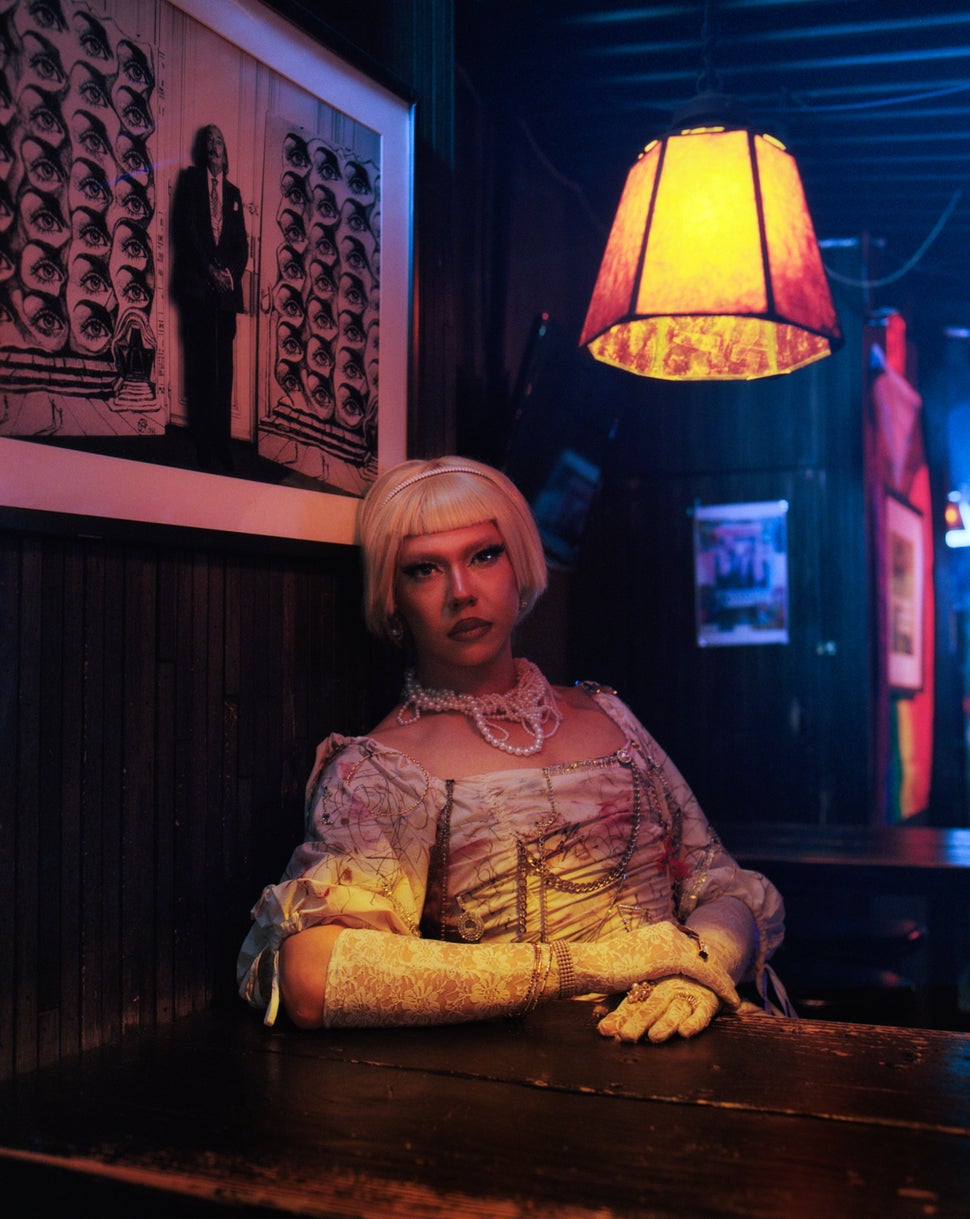
“I’ve been in drag since 2013, but I got more serious about it in 2019. I remember an early gig I had where they did not have space for us to prepare, and it was an outdoor event! So they had us get ready behind a chicken coop and then wrestle each other!
“So coming back to New York City was definitely something that challenged me, and I’m glad it did. New York City is home to some of the best drag in the world and being able to do this at this level is insane! The thing about New York drag is that we truly are a community.
“In the beginning, you go out and do competitions, open sets, ‘tip spots’ ― where you perform for tips rather than a booking fee ― and just go out to support other performers. My drag mother, Mocha, is of Japanese descent and has been working in the scene for over 16 years. She’s definitely someone who inspires me to be the best version of myself for sure!
“Growing up Asian American, drag wasn’t something that I had ever considered as something I could use to communicate. Drag in itself is an art that has a language of its own and can bring a lot of people together in ways one couldn’t even begin to fathom. A lot of times, we get into drag for the beauty, the horror, the glamour or any other aesthetic experience we want to create.
“When I had my first produced event with my drag sisters, seeing the room filled with so many young queer Asian people in one space awakened something in me. With my drag, I want them to see that they can do anything they want unapologetically, with full strength and conviction and not be humble about it. Audacity in being authentically Asian is something I think about a lot.” ― Kekoa.
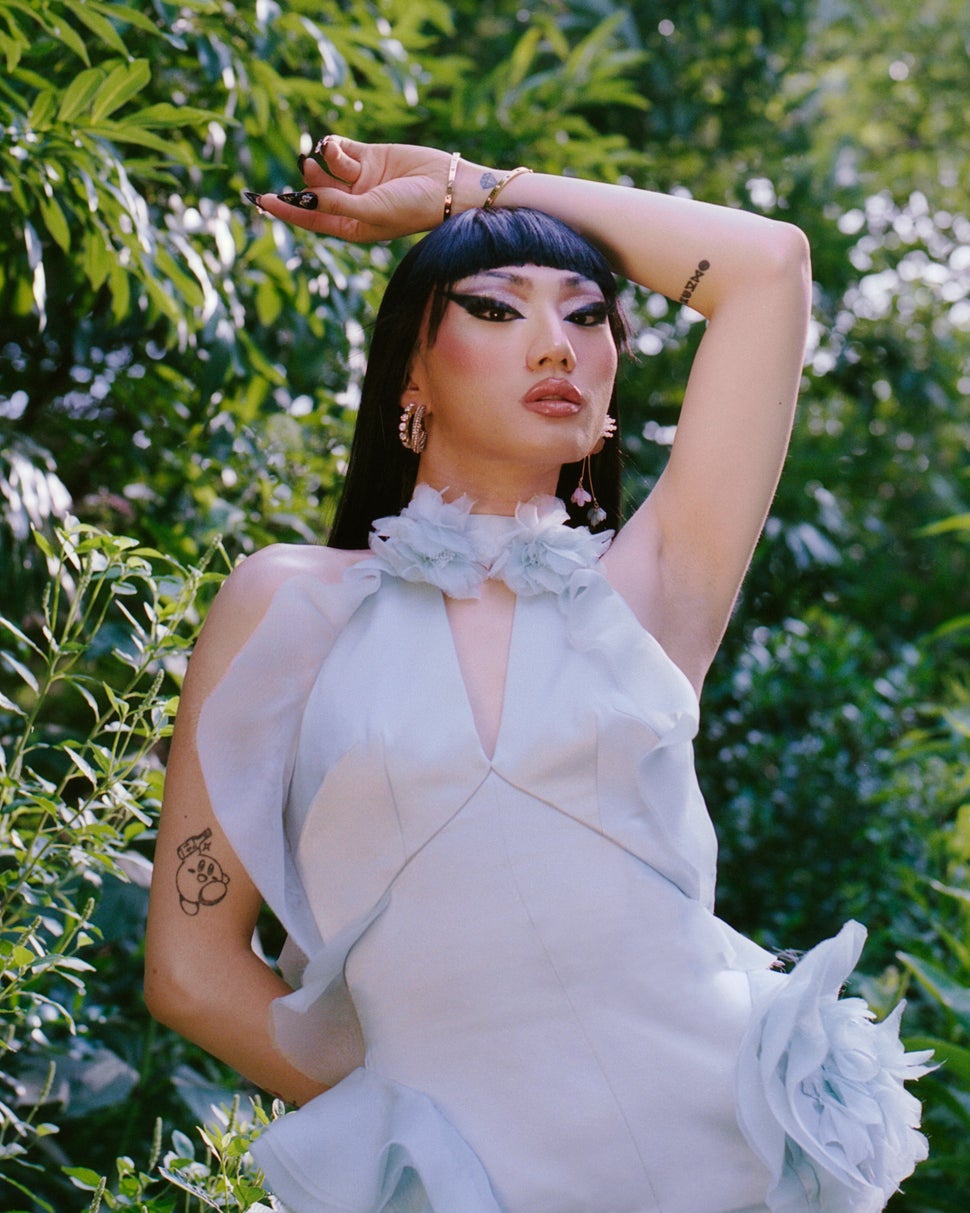
“Growing up, a lot of my inspiration came from the hyper-sexy bad bitches in the pop culture world ― Britney, Christina. Then there were more Asian American pop culture idols: I loved ‘Mulan,’ I loved Lucy Liu, I loved K-pop. Even when I was 3, I was watching K-pop. It was this hyper-feminine fantasy, and they were so honest and unapologetic about it. I think I archived all of those amazing memories, and I stored it away for Snix to finally pull it out and use it.
“I started performing in 2019, after cross-dressing to get into clubs with my girlfriends since about 2015. When I get to create these communities and atmospheres where people feel more safe and accepted, especially Asian Americans, then I feel I’ve done my job. That is the greater cause. I can go home happy if I was successful in that.
“A lot of Asian American performers don’t feel comfortable enough to perform in a lot of art spaces. That’s why a lot of them feel comfortable to do it on social media or in their rooms. I’m lucky enough to live in such a beautiful city like New York where there’s community and where, if I feel like I’m not being treated well within a certain space, I have the power to walk out.
“I feel like a lot of performers in New York just don’t understand the suppression that’s built up elsewhere. My parents divorced when I was little, and moving around taught me such a valuable lesson because I got to see so many different environments. Los Angeles, Kentucky, Chicago, Indiana ― I was hybrid-ing between both metropolitan and rural areas. Being Korean, I sometimes felt I had to hold myself in because I was so different. When I first came to New York, everything changed because I got to see everyone live their own life. Like Gaga always says, ‘You’re a free bitch, baby.’
“Some advice that I’d give to a younger, more supple, more collagen-filled Asian drag artist? Recognize that confidence starts within yourself. Yes, there’s the hair, the nails, the clothes and that’s all glamorous, but those are all add-ons; it really comes within yourself. There’s a beast inside of you that wants to be unleashed, and the minute you unleash it you are going to realize how liberating and free that feels.” ― Snix, 27.
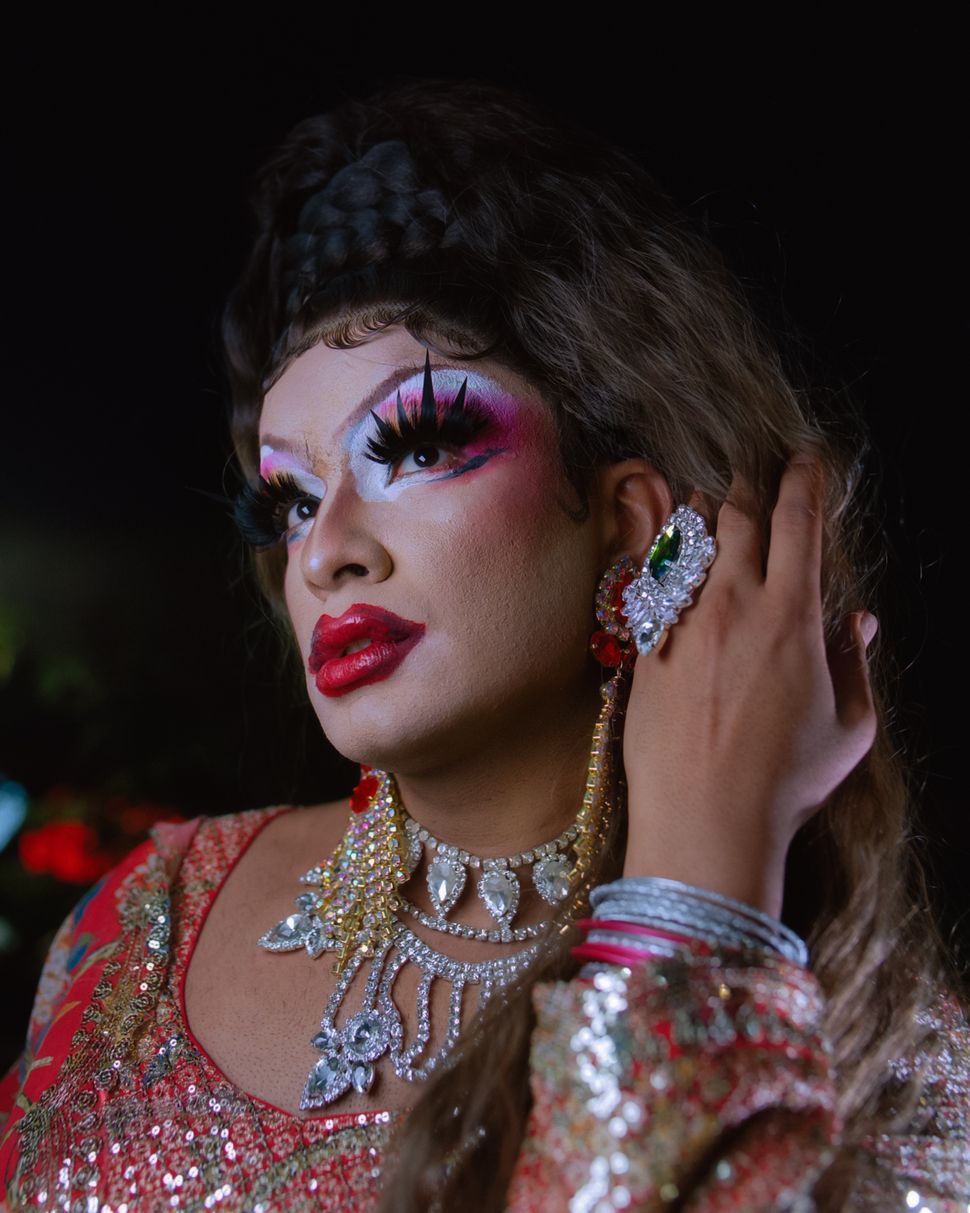
“I was introduced to drag in the dingy clubs of Mumbai, way back when homosexuality was still being criminalized, circa 2010. My friends and I would go dancing at the infamous gay Bombay parties where all the fabulous transgender women from the hijra community would show up wearing their ever-so-fashionable outfits, ready to dance to Sridevi songs.
“I immediately felt a sense of belonging and sisterhood, and I knew I wanted to belong somewhere within that community, even though I didn’t identify as transgender. What was interesting was how this group of women were able to form a community around themselves immediately; like a magnet around metal, they just had the ability to cause a movement. They were political bodies, and all they had to do was show up. The power of that will never be lost on me.
“When I moved to America at the age of 24, it was quite an isolating experience. I felt stripped of my community, and I hated the idea of being in queer spaces because of how alienating it all felt. I started to realize that if you walk into a room and you don’t see a representation of yourself, maybe you have to become it, even though the sheer idea of it is cumbersome and exhausting. But you get up on that stage and dare to be different, because the alternative to that is being in a room where you see zero reflection of yourself.
“How did I start? Well, I was a bedroom queen — someone who does drag privately and takes a lot of photos — for many many years until the pandemic hit. I thought I was going to lose my job, so I decided to host my very own Bollywood dance class at Prospect Park in full amateur drag in order to make some money. Soon it became a hit, and I kept doing it until the clubs finally opened. I hosted my first Bollywood dance night at a dingy sports bar in Hell’s Kitchen in 2021, and the rest is history.
“I just sold out my drag Bollywood cabaret show at the Laurie Beechman Theatre (soon to turn into a tour) with my dear sister Lady Bushra. I recently performed at Brooklyn Museum with a fabulous cast of AAPI performers. I routinely host drag brunches at Priyanka Chopra’s restaurant, Sona, where we read stories to children, play games and dance to Bollywood songs.” ― Malai, 33.
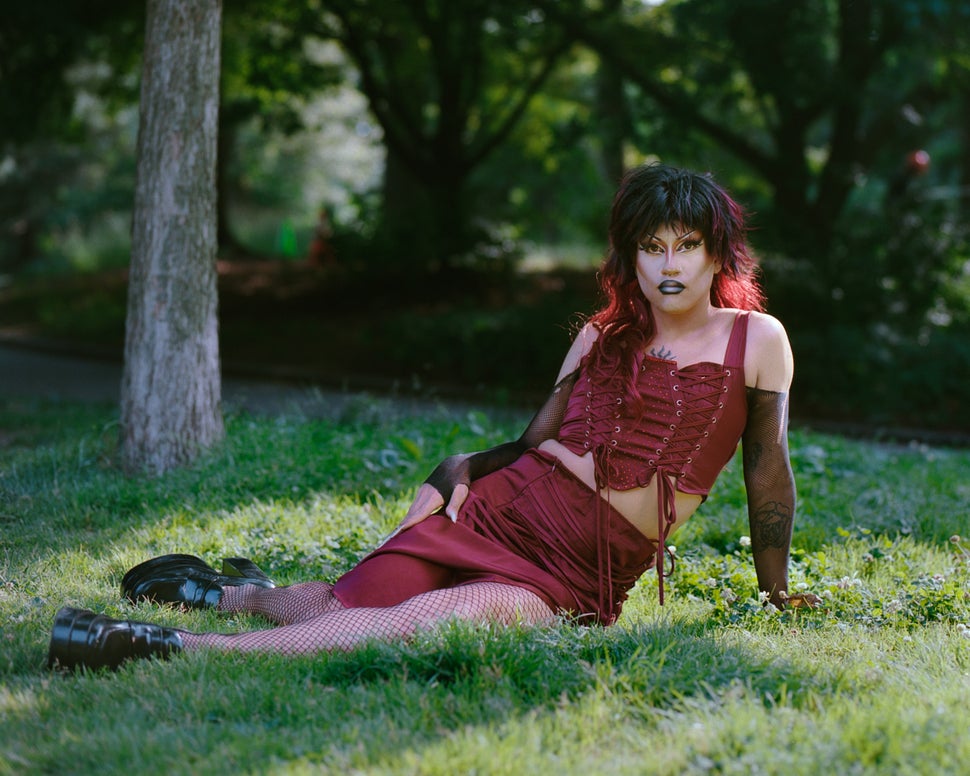
“As a contemporary dancer, I moved to NYC to pursue a career in the dance world. But I found those spaces to be cis, heteronormative and white. I needed to perform, and drag became an avenue for me to share my art with people who embraced me. There’s something extraordinary about being seen by the people that you want to be seen by and seeing them back in return.
“As a fairly new performer, I am still learning and growing, but I am very proud of what I’ve accomplished during my time: traveling, performing in front of ‘Dragula’ alums, producing a kick-ass, sold-out show at The Red Pavilion, called the ‘Red Lantern District,’ with my sisters Kekoa and Felicia Oh. Creating places for queer Asian people who didn’t feel like they had a space in NYC nightlife is important because I feel that historically we have been tokenized to fill a quota or check a diversity box.
“For just-beginning performers, I’d let them know this scene can be difficult to get into and to stay on your toes. It is grueling, but if you’re willing to put in the work it will become the most rewarding thing in the world. You also have to remember as drag artists, we are voices of the community and there are responsibilities that come with that. That said, don’t take yourself too seriously. Drag is subversive — it can be stupid and fun, or serious and dark.” ― Kanika Peach, 28.
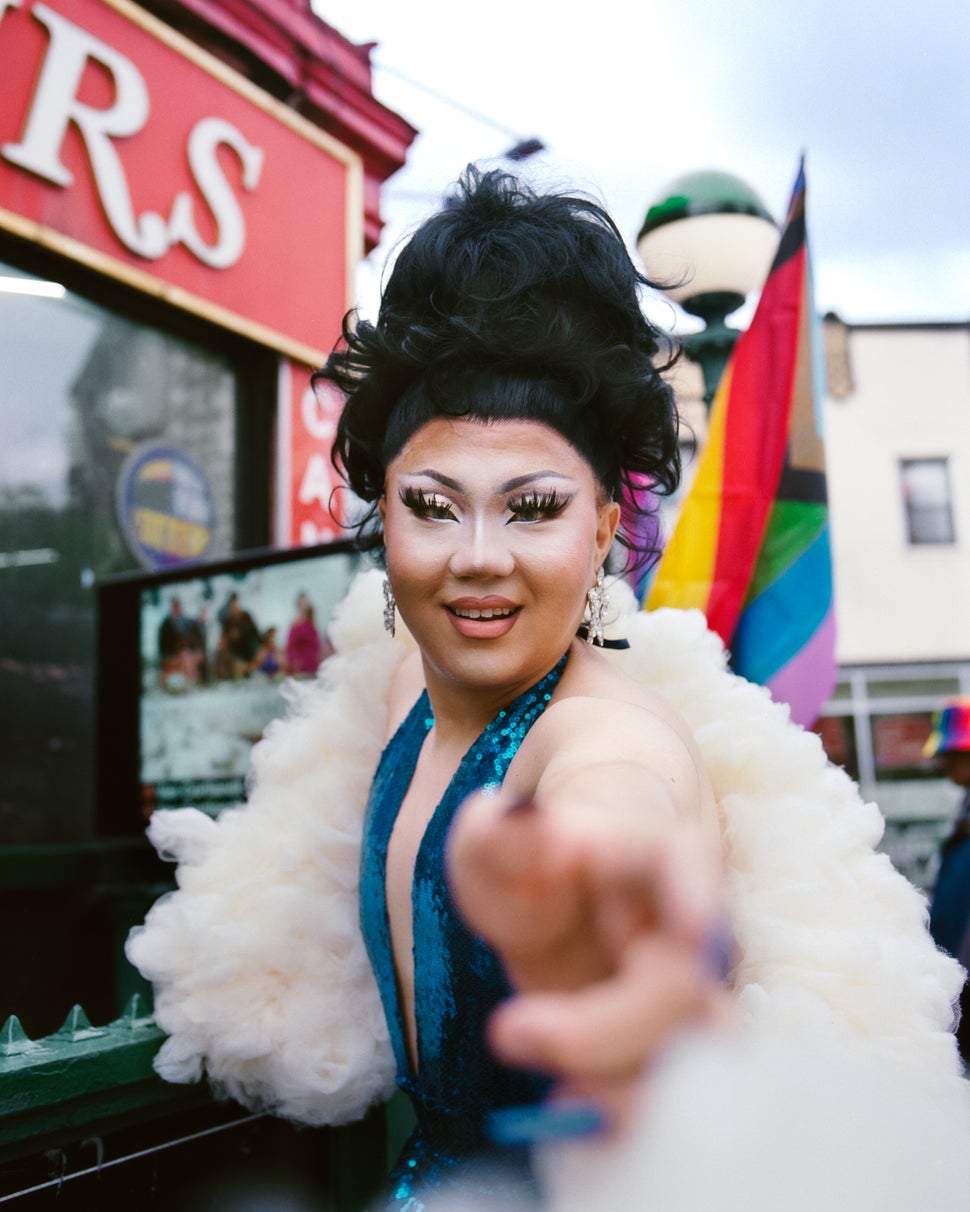
“Interestingly, I was first introduced to drag by my mom when I was 10. Every year, my mom made me participate in AIDS Walk LA where I’ve seen countless amounts of drag queens perform as we walked for a great cause. To be frank, I was terrified by how big and loud they were. Fast-forward to when I graduated college, I was working a corporate 9-to-5 job and was getting burned out quickly. I figured I needed a creative outlet to outweigh my mundane day-to-day, so I started going to local drag shows and something about them piqued my interest. I’m not sure if it was because of nostalgia or weirdly transforming my fear into a fascination, but I decided I wanted to try becoming a drag queen.
“From the jump, I knew I wanted to produce events showcasing queer Asian talent, and I’ve stuck with my mission. Unfortunately, our stories are rarely being told in these queer spaces. And when we are booked, many times it’s to perform stereotypically Asian numbers: Mulan, Chun-Li, Sailor Moon.
“One piece of advice I’ve learned through nightlife is, don’t be afraid to ask. As a child of immigrant parents, I’ve always been afraid to take up space and ask for what I want. I’ve learned that if you don’t ask, you’ll never get it. The worst that can happen is to get a ‘no.’” ― Shia Ho, 27.
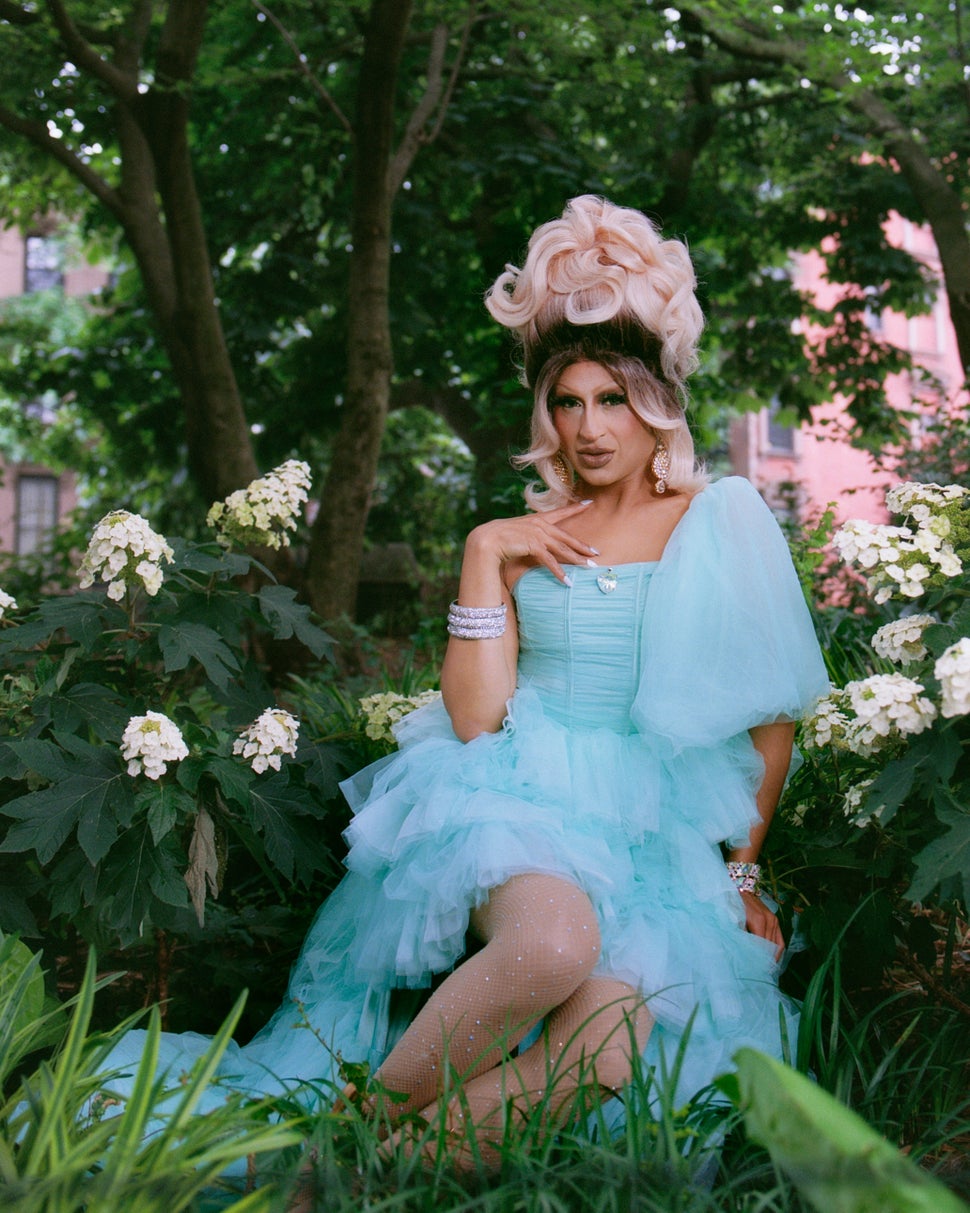
“By day, I work in the health care industry, but my heart has always been filled with creativity. Theater and Bollywood dance were integral parts of my upbringing. Branded as Chutney, NYC’s premiere Bollywood pop princess, I possess the power to captivate audiences with a diverse repertoire: everything from Ariana Grande to iconic ’90s Bollywood hits.
“The absence of South Asian American drag queens in the community became the driving force behind my pursuit of drag. While watching Season 6 of ‘RuPaul’s Drag Race’ in 2014, I was captivated by the beauty and diversity showcased by the queens on the show. However, I couldn’t help but question the lack of representation for the queer South Asian community, particularly within the NYC drag scene. At that moment, I made a personal commitment to take action.
“Within the South Asian community, two remarkable queens served as my guiding lights when I first started. LaWhore Vagistan, a true trailblazer within the South Asian drag and queer community, inspired me with their fearlessness and dedication to their art. Additionally, Lal Batti, my NYC sister, not only gave me my first official gig in 2018 but also exemplified unapologetic South Asian expression.
“To aspiring younger Asian drag artists, my message is simple: Embrace and celebrate your culture, incorporating its essence into your drag. By staying true to your unique self, you’ll amplify the impact of your art. Don’t give in to the pressures of drag trends or stereotypes. Dedicate yourself to learning the necessary skills, dive deep into queer and drag history, and above all, remain authentic. Your audience will take notice.” ― Chutney Chataranga.
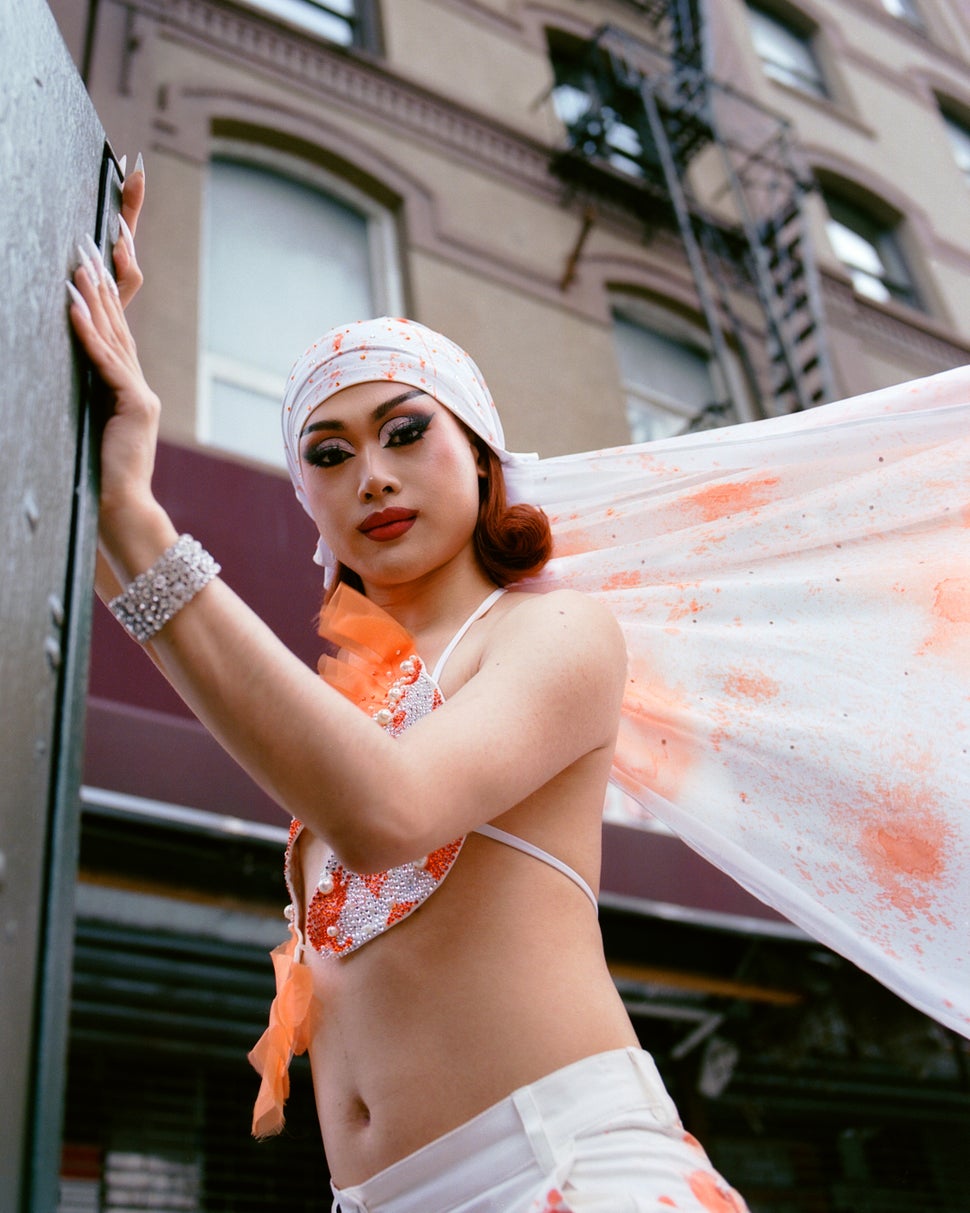
“When I found drag, it was like a door opened because here was an art form that combined everything I loved ― performing in school theater productions, doing makeup ― that I could make into a career. At the time I was also discovering my trans identity, and drag became a way for me to find out more about myself.
“After moving to NYC for college, I wanted to start my drag career, but I didn’t know how. I was 18 and didn’t even know how to get into the clubs! I would perform at school events in drag, but then the pandemic hit my freshman year of college. After the pandemic was calming down and clubs were reopening, in late April of 2021, I signed up for a local drag competition in Brooklyn and won!
“From there, I kept competing, winning ― and losing ― but this experience of grinding gave me a sisterhood and community of drag queens, kings and things that I’m so grateful to have! Since I’ve started, I’ve been a part of a few beauty campaigns, gotten to walk … Fashion Week [Brooklyn], been featured in Paper Magazine a few times, and even graced the cover of Harper’s Bazaar Kazakhstan! I truly owe so many of these opportunities to the NYC drag community!
“You don’t have to be the only Asian in the room. A lot of times, it might feel that, because gigs are so limited and competitive, there can only be one Asian, but that’s not true. You have a sisterhood and bond with AAPI drag artists, and there is so much strength in standing in solidarity and lifting each other up! Don’t be afraid to ask for help because most of us just want you to succeed. Be kind to everyone you meet — you never know who will give you your next opportunity! Also, just have fun. Explore all aspects of yourself, and push your own limits to find out what you excel in.” ― Angel Au, 22.
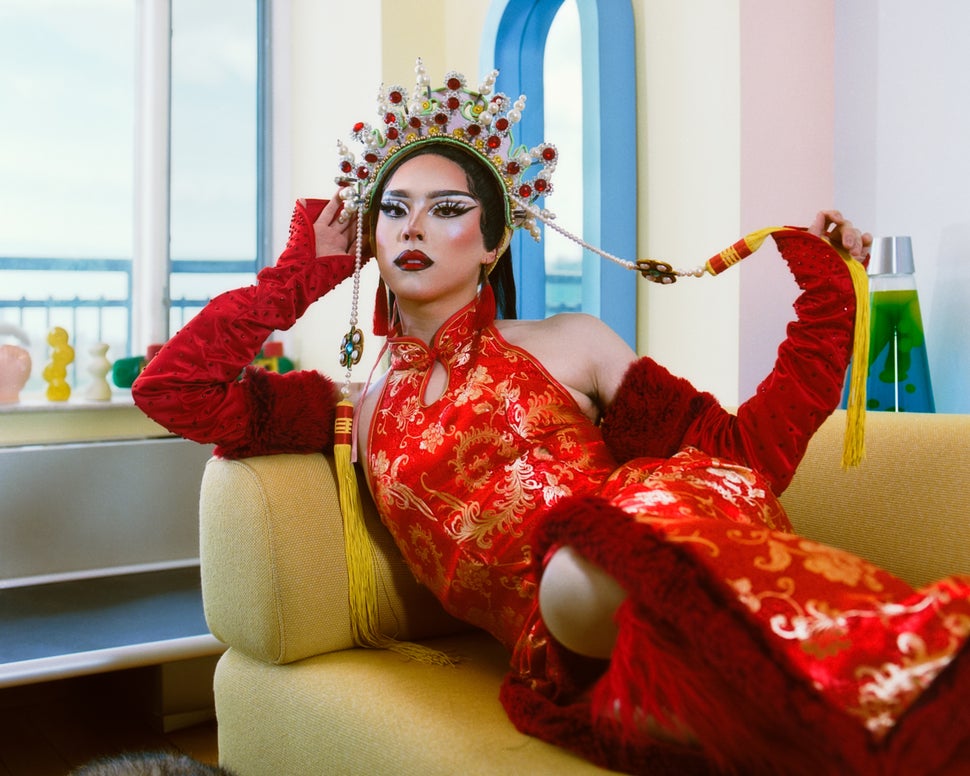
“Though I’ve always had a desire to pursue drag in the back of my mind, after college, I felt compelled to get a 9-to-5 after graduating. But I found myself burned out from navigating and climbing the corporate ladder.
“During the pandemic, I had all the time in the world to quarantine at home and explore different hobbies. For some, it was baking cookies and painting — for me, I became a ‘living room queen’ and played around with makeup. I remember getting in full drag in my living room just to film TikToks and take photos. And then I would study the photos to see where I needed to improve upon. This was such a transformative time for me, because I was able to hone my makeup skills before debuting my drag persona to the world.
“Drag to me was also very therapeutic and healing during a time when the world was experiencing a lot of turbulent emotions. I finally performed for the first time in December of 2021, so I’ve been performing for about a year and a half, with some monthlong hiatuses in between due to work. I’ve come such a long way from doing open sets and performing for free to now taking on some of the biggest stages in NYC queer nightlife.
“The AAPI drag community in NYC is a close-knit one — we all know and look out for each other because there aren’t that many of us. I want drag artists who are just starting out to know that they are loved and I am so proud of them for pursuing this passion at such a young age. We need more fresh talent, and I wish I had the courage to start exploring with drag earlier in life! I also want just-beginning queens to know that they are always welcome to reach out to me for advice ― or if they just need the tea on the best drag jewelry stores to go to, I’m your girl! I know what it’s like starting out in the scene since I’m very new as well — it can be very lonely, and having my sisters by my side really helped me. I want to be that person for the next generation of artists.” — Felicia Oh.
Credit: Source link